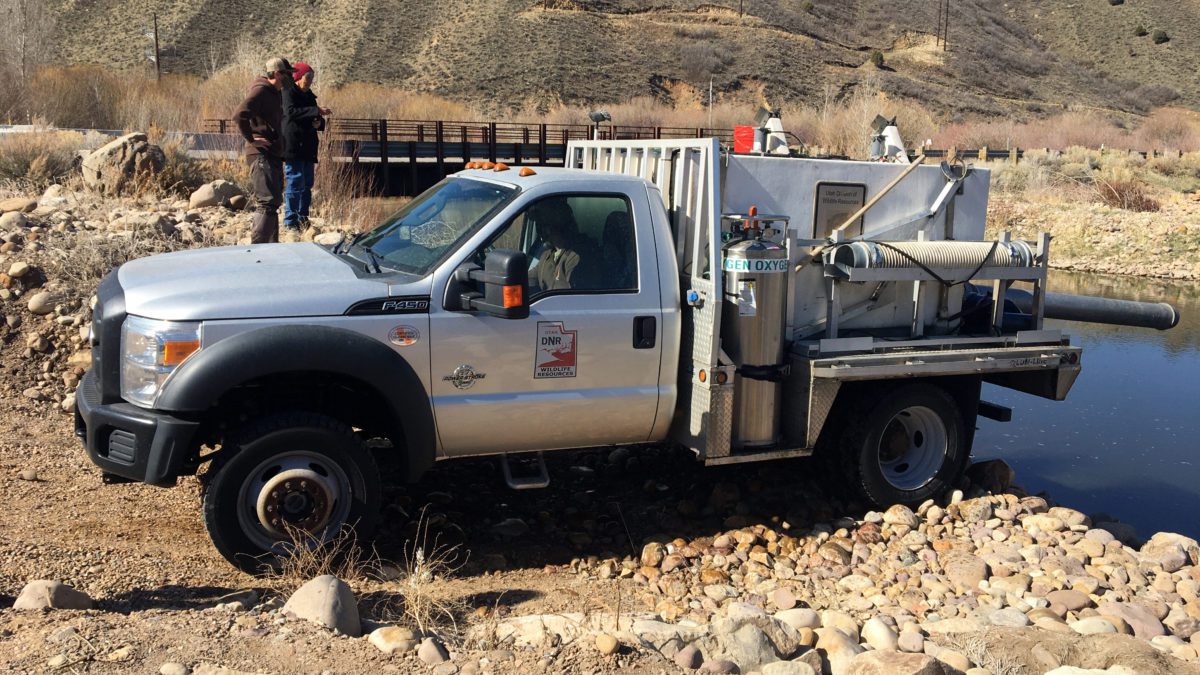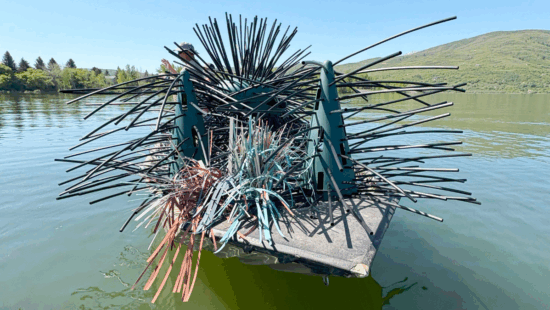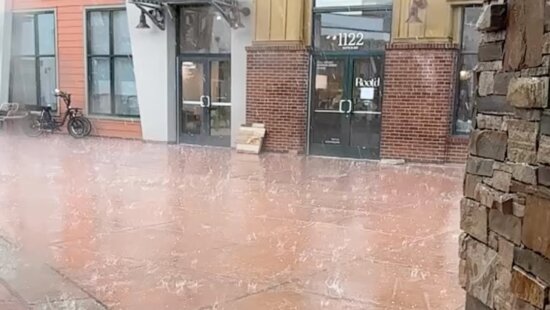Wildlife
DWR alters fish stocking to minimize drought impact

As half the state of Utah is still experiencing extreme drought conditions and in response to Gov. Spencer Cox’s recent drought emergency order, the Utah Division of Wildlife Resources (DWR) has reimplemented proactive measures to help minimize drought impacts to Utah’s fisheries. Photo: DWR.
SALT LAKE CITY — As half the state of Utah is still experiencing extreme drought conditions and in response to Gov. Spencer Cox’s recent drought emergency order, the Utah Division of Wildlife Resources (DWR) has reimplemented proactive measures to help minimize drought impacts to Utah’s fisheries.
Similar to last year, the DWR has decided to strategically redetermine where fish will be stocked this year, in order to either reduce or eliminate fish from being stocked into areas where they anticipate fish could potentially be at risk due to low water levels.
Smaller bodies of water heat up more quickly and to higher temperatures than when there isn’t a drought. This is bad for fish because warm water holds less oxygen than colder water. The combination of high temperatures and low oxygen can stress fish, causing poor growth and disease. Fish can also die when temperatures are too warm or the oxygen levels get too low.
The DWR consulted various water users, surveyed current water levels at reservoirs across the state and also looked at the history of water management at specific local water bodies. Using that information, DWR fisheries managers identified water bodies that are projected to have low fish survival or poor angler access later in the summer, due to low water levels. As a result, the DWR will either reduce or eliminate stocking fish into those waterbodies in an effort to decrease the number of fish impacted by the low water levels. The fish that were scheduled to be stocked into the drought-impacted lakes and reservoirs will be relocated and stocked into other bodies of water around the state that won’t have low water levels.
“The best management action we can take at these water bodies is to reduce the number of fish in these waters because when water levels are low, we are more likely to maintain a fishery that has fewer fish than one that has a lot of fish,” DWR Sportfish Coordinator Randy Oplinger said. “We try, whenever possible, to continue to provide a good fishing experience for anglers, up until we think that water levels will hit a critical level. Then, we want to reduce the number of fish in that waterbody by decreasing the number of fish that are stocked there. We are hopeful that anglers will catch and harvest most, if not all, of these stocked fish by the time water levels become so low that fish survival is impacted.”
Many of the water bodies projected to have low water levels this year are the same ones that were low last year. Due to increased daily catch limits implemented at those waterbodies last summer, there are already fewer fish in these lakes and reservoirs.
“The number of fish in these waters is lower this year than it was at the same time last year, due to last year’s drought, fish stocking changes and the temporary harvest limit increases we implemented,” Oplinger said. “We feel at this time that emergency fishing regulation changes to increase daily catch limits are not necessary on these waters because of the already reduced number of fish. However, we are going to re-evaluate conditions at the end of June and, if necessary, we may make additional stocking changes or even issue emergency fishing regulation changes, as needed.”
The DWR is also looking at long-term solutions for managing fishing at water bodies that are repeatedly impacted by low water levels. Some of those solutions include:
- Evaluating the fish species that are stocked at drought-impacted water bodies. For example, instead of exclusively stocking coldwater trout species, more warm water species that aren’t negatively impacted by high water temperatures would be stocked into some waters.
- Adjusting the timing of when fish are stocked, as well as the size of the fish when they are stocked. For example, instead of stocking fish in the spring right before the hot summer that could impact water levels and water temperatures, the fish would be stocked in the fall so they could be caught during the autumn and winter months.
- Creating standardized, seasonal fishing regulation changes. For example, instead of having to issue emergency changes to the daily catch limit at certain water bodies each year, those fishing limits would automatically increase on a particular date as a permanent regulation change for the lakes and reservoirs that are regularly impacted by low water levels.
- Buying additional water rights for drought-impacted fisheries, whenever possible.


















